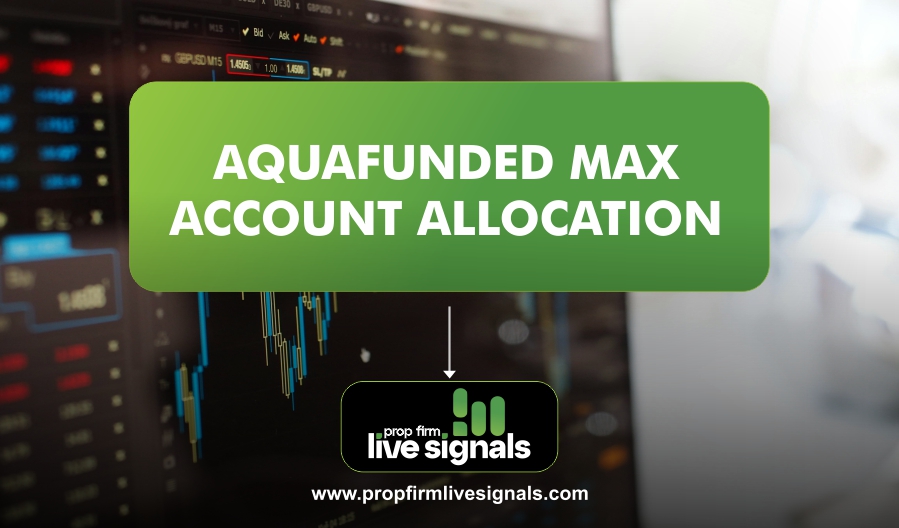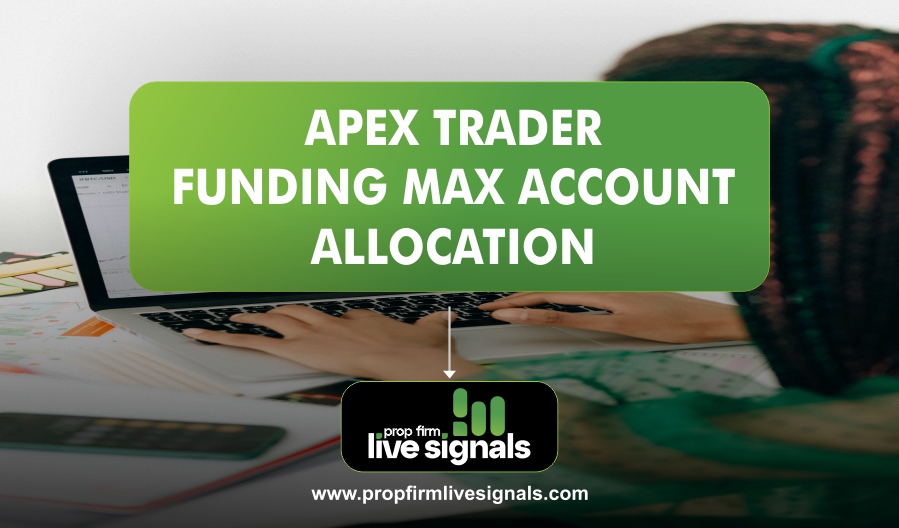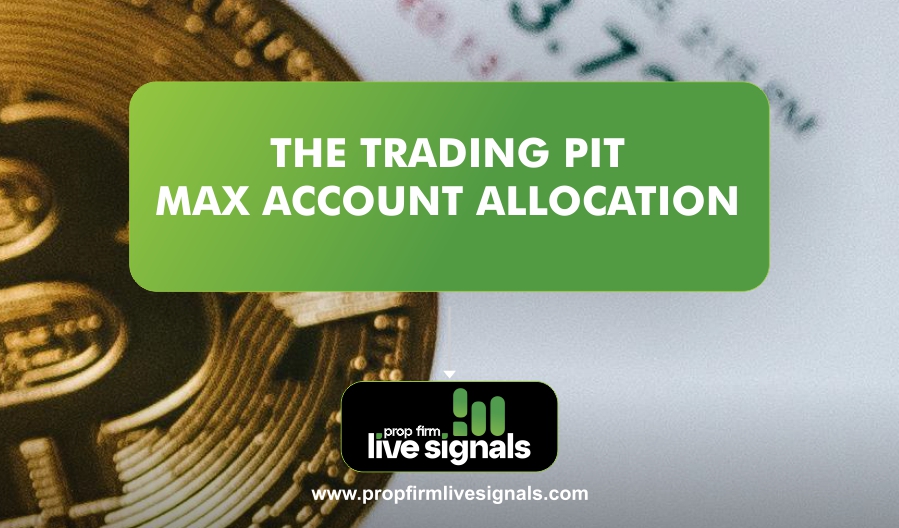In the financial world, where and how you allocate funds can determine your financial success, AquaFunded Max Account Allocation provides a strategic approach focusing on diversification, liquidity, and targeted returns to help investors balance their portfolios.
Whether you’re a seasoned investor or a beginner, understanding AquaFunded Max Account Allocation is essential. This strategy allows for diversified investments across asset classes, keeping your portfolio balanced, resilient, and poised for growth. In this post, we’ll explore how it works, its features, benefits, and why it could transform your investment strategy.
As the financial landscape evolves, investors seek methods offering both stability and growth. It provides flexibility to maximize returns, adapt to changes, and protect against market volatility. If you’re looking for a professionally managed, hands-off approach, this strategy may be exactly what you need.
What is AquaFunded Max Account Allocation?
AquaFunded Max Account Allocation is a specialized investment and fund allocation strategy typically provided by financial institutions or investment firms. It is designed to offer high-level asset management, focusing on maximizing returns while reducing the risks associated with more volatile investments. The term “AquaFunded” usually indicates a focus on liquidity and fluidity in the allocation process.
This type of account allows investors to diversify their portfolios into multiple investment vehicles, such as stocks, bonds, mutual funds, or even alternative investments, with the goal of creating a balanced risk-return profile. The “Max” part of the name refers to maximizing the potential growth of the investments within the account while maintaining a sustainable level of risk.
How Does AquaFunded Max Account Allocation Work?
AquaFunded Max Account Allocation works by distributing your investment funds across various assets to achieve a maximum level of growth while maintaining sufficient liquidity. Here are some key components involved in the process:
- Risk Management:
- Diversification is key in this strategy. Funds are spread across different sectors, industries, and geographical regions to mitigate risks. The goal is to avoid putting all your eggs in one basket.
- Analyzing market conditions regularly helps in adjusting the portfolio to reduce potential risks. It typically includes some level of automated rebalancing, which means that when the market conditions change, your portfolio can adapt accordingly.
- Liquidity:
- Liquidity refers to the ability to quickly turn assets into cash without significantly affecting their value. It places an emphasis on maintaining sufficient liquidity within the portfolio, ensuring that you can access your funds when needed.
- Asset Classes:
- Investors can choose from various asset classes, including stocks, bonds, and real estate, among others. A diversified portfolio across asset classes reduces the impact of poor performance in one sector on the overall performance of the account.
- Growth vs. Stability:
- The strategy strives to find a balance between growth and stability. You can allocate a portion of the portfolio to high-growth assets like stocks, while directing another portion toward more stable investments such as bonds or blue-chip stocks.
- Targeted Return Goals:
- AquaFunded Max Account Allocation typically comes with a targeted return goal, which is a set percentage return that investors aim to achieve over a specific time frame. This helps investors understand the performance expectations and align their investment strategy accordingly.
Key Features of AquaFunded Max Account Allocation
- Diversification: The core feature of AquaFunded Max Account Allocation is the diversification of your funds. By spreading investments across different asset types, you reduce the risk of significant losses in case one sector underperforms.
- Automatic Rebalancing: This allows the portfolio to adjust periodically based on market changes or the specific criteria set by the investor.
- Risk-Adjusted Return: It aims to provide the best return for a given level of risk. Investors can adjust the strategy to their risk tolerance.
- Tax Efficiency: Depending on the platform, It might offer tax-efficient strategies that help you minimize tax liabilities, which can result in higher net returns over time.
- Transparency and Reporting: Investors have access to regular performance reports that detail how the allocation strategy is performing. Transparency is key in understanding the impact of decisions made within the strategy.
Benefits of AquaFunded Max Account Allocation
- Maximized Growth Potential:
- The primary benefit of AquaFunded Max Account Allocation is its ability to deliver potentially higher returns by focusing on growth opportunities while minimizing risks.
- Lower Risk through Diversification:
- By diversifying investments across multiple asset classes and sectors, this strategy significantly lowers the risk of large losses.
- Adaptability:
- AquaFunded Max Account Allocation adapts to changing market conditions. As the financial landscape evolves, the portfolio can be adjusted to continue meeting growth objectives while keeping risks in check.
- Professional Management:
- For those who prefer a hands-off approach, It is often professionally managed by financial experts, offering peace of mind to investors.
- Liquidity:
- The focus on liquidity means that investors have easy access to their funds, making it a flexible option for those who may need to cash out their investments quickly.
How to Set Up an AquaFunded Max Account Allocation
Setting up an Max Account Allocation is relatively simple, though it requires a thorough understanding of your financial goals and risk tolerance. Here’s a general guide:
- Choose a Platform:
- Select a financial institution or investment firm that offers AquaFunded Max Account Allocation. Look for one with a good track record and transparency in how they manage accounts.
- Fill out a Risk Profile:
- Complete a risk assessment questionnaire to determine your risk tolerance. Based on your responses, the firm will help design an allocation strategy that suits your needs.
- Fund the Account:
- Deposit funds into your AquaFunded Max Account. Some platforms may have minimum deposit requirements.
- Review and Monitor:
- Regularly monitor your portfolio’s performance. Many platforms offer online dashboards for easy access to this information.
- Adjust as Needed:
- Depending on your goals and market conditions, you can adjust the allocation periodically to stay on track with your investment strategy.
Conclusion
In conclusion, AquaFunded Max Account Allocation provides investors with a powerful tool to grow their wealth while minimizing risks. By focusing on diversification, professional management, and liquidity, this strategy is ideal for those looking to make the most of their investments without constantly worrying about market fluctuations. Whether you’re a seasoned investor or a beginner, understanding how AquaFunded Max Account Allocation works and the benefits it offers can help you make informed decisions for a secure financial future.
Frequently Asked Questions (FAQs)
What is the minimum amount required to open an AquaFunded Max Account?
The minimum deposit varies by platform. It could range from a few hundred to thousands of dollars, depending on the investment institution.
Can I withdraw funds from my AquaFunded Max Account?
Yes, one of the benefits of Max Account Allocation is liquidity. You can generally access your funds, though there might be withdrawal fees depending on the platform.
How often does the account get rebalanced?
The rebalancing frequency can depend on the terms of the account. Some accounts automatically rebalance monthly, while others might do so quarterly or annually.
Is AquaFunded Max Account Allocation a good investment strategy for beginners?
It is often a good choice for beginners because it is managed by professionals, making it easier to understand. However, understanding your risk tolerance is still essential.
What is the risk of AquaFunded Max Account Allocation?
While the strategy is designed to minimize risk through diversification, all investments carry some level of risk. Understanding your risk tolerance is key to determining whether this account type is appropriate for you.




